If, as a chief compliance officer, you’re looking to mitigate risk by training your healthcare staff in compliance issues, you’re probably looking for a type of corporate training that can deliver scalability, a quick method that doesn’t take learners out of the workplace for too long, and the ability to keep learners engaged so their compliance training can help when it’s needed most.
What’s the Best Kind of Training for Healthcare Compliance?
Topics: Compliance
How Adaptive Learning Software Proves Compliance Training Is Effective
Organizations such as the Occupational Safety and Health Administration (OSHA) and the Centre for Medicare Services, and legislation such as the Health Insurance Portability and Accountability Act (HIPAA) and the Food Safety and Traceability Act (FSMA), have created professional standards and training requirements for businesses and institutions. When audited, the onus is on each entity to prove that they have met these specifications.
Topics: Adaptive Learning, Compliance
When failure is not an option, compliance training must be done right the first time. But what if compliance training could do more than mitigate risk? What if training could teach employees to excel when the stakes are high?
Topics: Compliance
One Thing a Bank Compliance Officer Should Do to Prepare for an Audit
You’d think that the training itself would be the most important part of compliance training. In many ways it is. But it might surprise you to learn that often, for a bank compliance officer, detailed reporting of compliance training may be more important than the training itself.
Topics: Compliance
The Importance of Adaptive Learning in Risk Mitigation for Compliance
Assessments have been critical to successful compliance programs. Regular testing allows businesses to prove to auditors that the proper steps toward risk mitigation are being taken. The fact that Adaptive Learning uses formative assessment (teaching by asking questions throughout the course to assess learner understanding) instead of summative assessment (a post-course test) makes it much more powerful than traditional approaches to compliance training.
Topics: Compliance
Why Your Risk Mitigation Plan Needs Adaptive Learning to Be Successful
Learning and development training will always play a key role in a risk mitigation plan. In high stakes industries like healthcare or banking, and in industries that require important complex skills like aviation, training is a critical tool to mitigate risk.
Topics: Compliance
Why E-Learning Alone Won’t Fix the Skills Gap (Adaptive Learning Will)
Millennials are no longer just a small cohort of recent graduates entering the workforce. Many have reached managerial positions and, in some cases, have been working up to a decade beyond their post-secondary education. According to Abacus Data, in 2018 in Canada Millennials will make up the largest cohort in the workforce, making them the most represented of any other age group; also, more Millennials are eligible to vote in Canada than Baby Boomers.
Topics: Corporate E-Learning, Compliance
Because of cultural and economic changes, Millennials are more likely to change jobs frequently, or “job hop,” than older generations - especially in the five years following graduation. Often employers hope or expect that their new hires will stick with them for a long-term period, but that is getting less and less likely.
Topics: Compliance
Mitigate Risk by Creating Compliance Training Employees Enjoy
A compliance officer understands the risks of poor compliance training: lawsuits, litigation, poor workplace safety. You name it.
Topics: Compliance
Depending on the school of thought you adhere to you might have heard that there are four, seven, eight, even seventy-one types of learning styles. While experts vary, the general consensus is that there are at least three: visual, auditory, and kinesthetic. It’s commonly believed that to provide a unique learning experience, learners must be able to learn within their preferred style. But we’re not so sure.
Topics: Compliance
When “Just in Case” Is Better Than “Just in Time” Training
“Just in time” training typically means giving people access to content at the moment of need. Google Search delivers just in time content every day. The value is that it provides learning satisfaction at the point of need. So when your staff can’t remember the specifics of a certain regulation, they have access to resources that help them find the answer to their question. Access to content on demand is an invaluable part of a learning strategy, especially when formal training is infrequent or difficult to access.
Topics: Compliance





